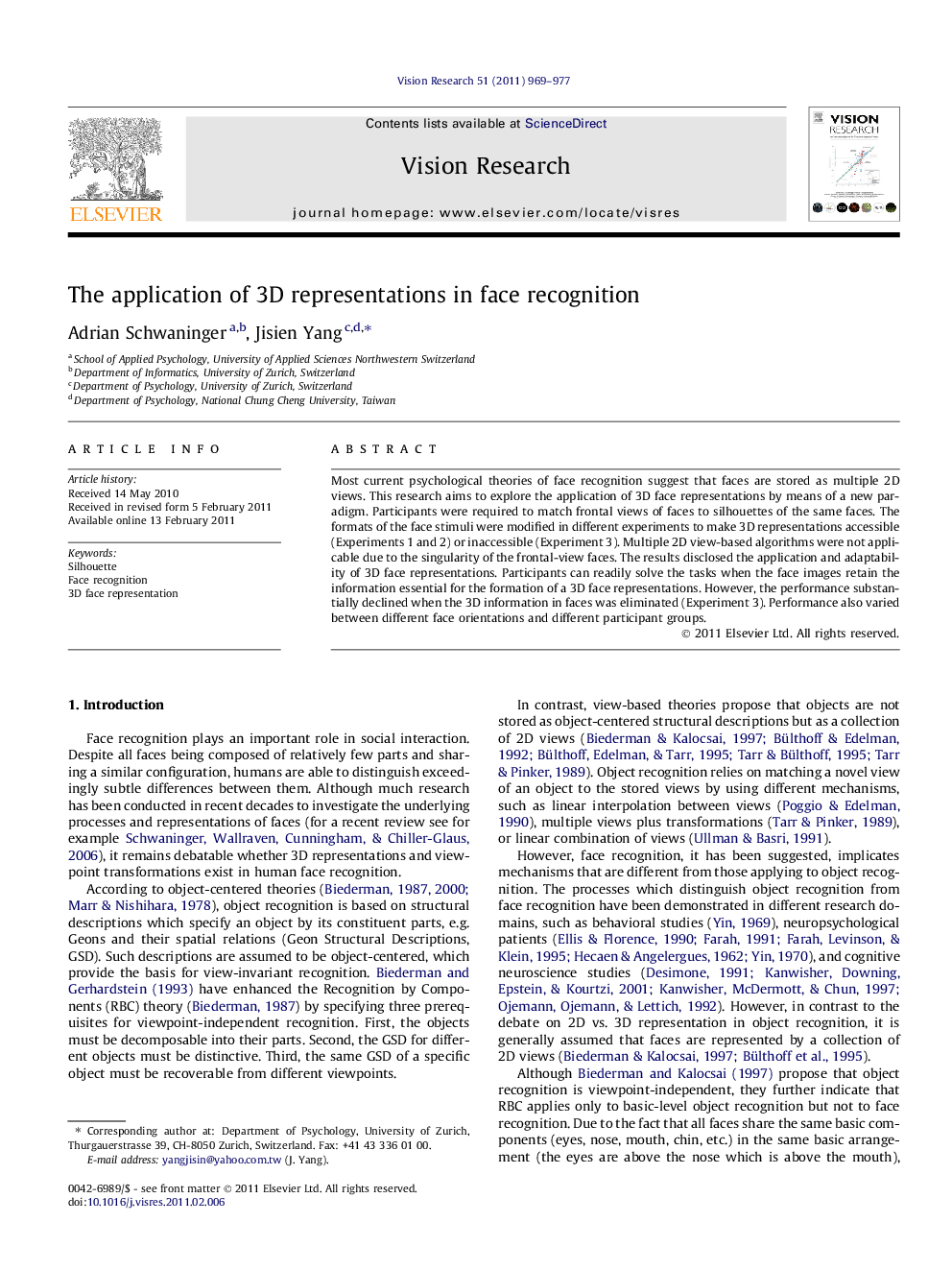| Article ID | Journal | Published Year | Pages | File Type |
|---|---|---|---|---|
| 6203768 | Vision Research | 2011 | 9 Pages |
Most current psychological theories of face recognition suggest that faces are stored as multiple 2D views. This research aims to explore the application of 3D face representations by means of a new paradigm. Participants were required to match frontal views of faces to silhouettes of the same faces. The formats of the face stimuli were modified in different experiments to make 3D representations accessible (Experiments 1 and 2) or inaccessible (Experiment 3). Multiple 2D view-based algorithms were not applicable due to the singularity of the frontal-view faces. The results disclosed the application and adaptability of 3D face representations. Participants can readily solve the tasks when the face images retain the information essential for the formation of a 3D face representations. However, the performance substantially declined when the 3D information in faces was eliminated (Experiment 3). Performance also varied between different face orientations and different participant groups.
⺠This research provides evidence in support of the existence of 3D face representations. ⺠Participants were required to match frontal views of faces to silhouettes of the same faces. ⺠Profile, silhouette, and line-drawing faces were used to compare the difference. ⺠The face inversion effect and other-race effect were demonstrated in 3D face representations.
